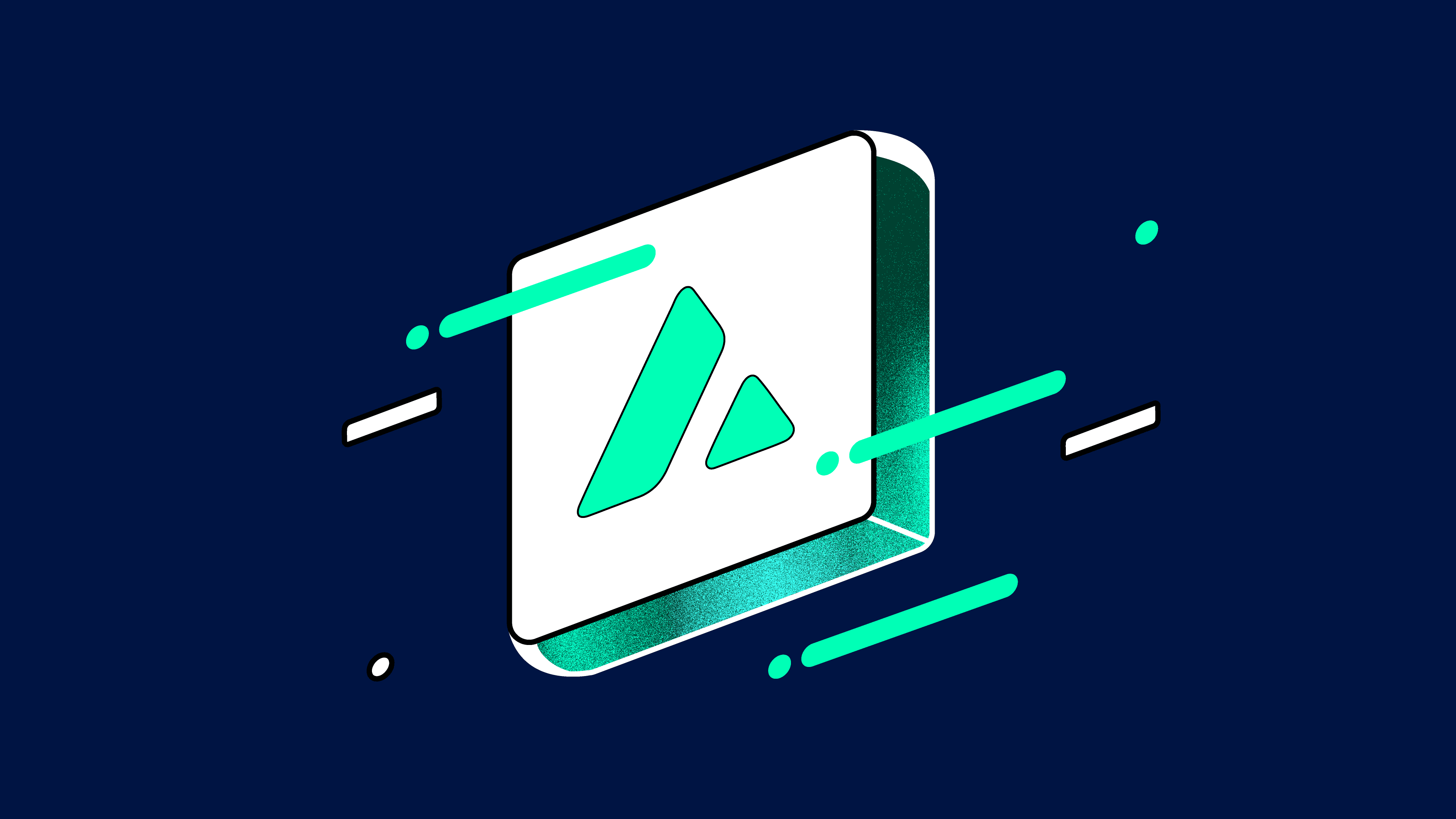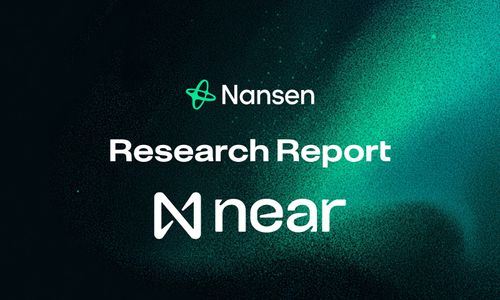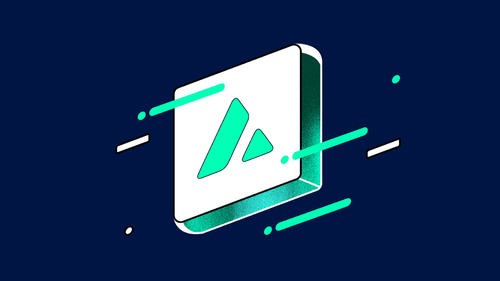Disclaimer: Nansen has produced the following report in collaboration with Slice Analytics as part of its existing contract for services provided to Avalanche (the "Customer") at the time of publication. While Avalanche has the right to review and provide feedback to Nansen, Nansen maintains full editorial control over the publication of this report. All views expressed are the independent opinions of Nansen's research analyst(s) who are the author(s) named in this report. This report is intended for informational purposes only and does not serve as investment, financial, professional, or other advice. For more information, please refer to the disclaimer at the end of this report, as well as our Terms of Service.
Overview
Avalanche is a smart contract platform designed for scalability, with a multichain framework consisting of Avalanche L1s that scale the network. The primary network includes P, X, and C chains. The P-chain manages validator and Avalanche L1-level functions, the X-chain manages Avalanche Native Tokens (which are a digital representation of real-world assets), and the popular C-chain is an implementation of the Ethereum Virtual Machine (EVM).
L1s on Avalanche refer to a subset of nodes or validators that work together to achieve consensus on transactions related to one or multiple blockchains. An Avalanche L1 can be a network operating within another network or a network built on top of a larger network. Avalanche's L1 architecture offers fast finality, custom Virtual Machine support, and a wide range of configuration parameters to builders.
In Q4 2024, Avalanche launched its Avalanche9000 upgrade to mainnet, reducing L1 deployment costs by 99.9% through means such as the Etna Upgrade, ACP-77 and ACP-125. On top of that, BlackRock and ParaFi Capital leveraged Securitize platform to tokenize their funds, Littio started offering yield-bearing USD accounts, and StraitsX introduced advanced stablecoin cross-border payments — all tapping Avalanche’s low fees and rapid finality.
Additionally, the AVAX network saw a significant uplift in multiple metrics, such as daily transactions, contract deployments, and active addresses - indicating a positive response of its user base to introduced changes and forming a positive trend projected to continue into 2025.
Key Developments: Q4 2024
Avalanche has launched the mainnet of its most significant network upgrade yet—Avalanche9000. This upgrade drastically reduces L1 deployment costs by 99.9% as well as reduced C-Chain base fees from 25 nAVAX to 1nAVAX, all through the Etna Upgrade, ACP-77, ACP-125, and introduces Interchain Messaging (ICM) for seamless interoperability across L1s. Over 500 L1s are already under development for diverse use cases, and a public leaderboard—guided by community votes—will help determine grant allocations, encouraging openness, collaboration, and rapid innovation within the Avalanche ecosystem.
BlackRock, through Securitize, has launched the world’s largest tokenized treasury fund—BlackRock USD Institutional Digital Liquidity Fund (BUIDL)—on the Avalanche blockchain, offering daily dividends and a stable $1 per token value by investing in U.S. cash, Treasury bills, and repurchase agreements. Each BUIDL token represents one share of the $500M+ fund, with on-chain settlement, low fees, and peer-to-peer transfers.
Uplink launched the first decentralized physical infrastructure network (DePIN) Layer 1 on Avalanche, aiming to transform global internet connectivity by enabling individuals and businesses to share and access network resources affordably and reliably. The platform lets users turn existing or new Wi-Fi routers into immediate connectivity providers, earning rewards for participation. Backed by Blizzard, Uplink targets the massive, rapidly growing $3.5T connectivity sector, addressing key telecom challenges such as high access costs and fragmented infrastructure.
Codebase by Avalanche, an incubator program for early-stage Web3 startups on the Avalanche network, has announced three winning teams from its second season: Chiss Protocol (taking $500k), AutoPen by Lucero Labs (earning $300k), and Disgo (receiving $200k). These teams, carefully picked out of over 100 applications from more than 20 countries, emerged victorious after a 10-week intensive program capped by a Demo Day where founders pitched to over 300 investors for a share of a $1M prize pool.
Ecosystem
DeFi
Littio, a Colombian neobank, leveraged OpenTrade’s real-world asset (RWA) yield vaults on Avalanche to provide interest-bearing USD savings accounts to Latin American users, addressing the region’s high inflation and significant unbanked population. By tokenizing U.S. Treasury Bills, Littio’s customers are able convert pesos into USDC to earn stable yields, withdraw funds, and spend seamlessly in-app or via a Littio debit card. The solution’s transition from Ethereum to Avalanche highlights the latter’s low fees, sub-second transaction finality, and scalable EVM compatibility, showed by over $80M in transactions and $250k in user returns since launch.
ParaFi Capital, an alternative asset manager with over $1B in AUM(Assets Under Management), has partnered with Securitize to tokenize an interest in one of its venture funds on the Avalanche blockchain, allowing a new class of investors to participate in ParaFi’s strategy. This move highlights ParaFi’s commitment to the growing real-world asset (RWA) tokenization space, where it has already been a major investor.
Upshift Finance launched its first ERC-4626 vault on Avalanche, utilizing LFG Liquidity Book technology to optimize liquidity provisioning in concentrated stablecoin pools. This vault simplifies liquidity management by automating deposits and rebalancing, enhancing yields for liquidity providers. Powered by August Digital and supported by Mnnc Group, Upshift aims to elevate DeFi experiences on Avalanche by offering secure, efficient, and scalable vault solutions designed for both institutional and retail users.
In October 2024, Suzaku launched its (re)staking protocol on Avalanche, enhancing the security and decentralization of Layer 1 networks. The protocol allows stakers to provide cryptoeconomic security and earn rewards by restaking assets like sAVAX and BTC.b, empowering Avalanche L1s to scale securely with customizable security models.
NFTs & Gaming
Faraway is developing a new, Avalanche-based Layer 1 blockchain. FCHAIN is meant to power Faraway’s growing ecosystem of games—such as Shatterline, Villains: Robot Battle Royale, and HV-MTL—by offering more flexibility, control, and performance than existing Layer 2 or Layer 3 solutions. By leveraging Avalanche’s Avalanche9000 upgrade, FCHAIN enables fully customizable staking economics, gas tokens, regulatory features, and open validator sets.
Gunzilla Games launched Off The Grid on Avalanche in October 2024, revolutionizing battle royale gaming with blockchain-integrated loot systems. Available on PC, Xbox, and PS5, the game introduces a player-driven economy powered by the GUNZ blockchain and $GUN token. Players earn $GUN through gameplay actions like kills and match placement, which can be used to unlock and trade in-game items such as weapons and skins. The "Loot, Extract, Decode" loop seamlessly blends blockchain mechanics with core gameplay, enhancing both player engagement and ownership of digital assets without compromising the battle royale experience.
Suntory Group, renowned for its Yamazaki Whisky, released a limited edition of tokenized Premium Malt’s beer on the Avalanche blockchain in mid-November 2024. Each 715ml bottle—aged in Yamazaki Whisky barrels—features NFC technology on its neck, which grants buyers a digital NFT certificate of consumption when the cap is opened. This pioneering project, announced at Thailand Blockchain Week by Suntory’s Chief Digital Innovation Officer and Ava Labs’ Japan Head, offers beer enthusiasts a unique fusion of physical and digital collectibles powered by Avalanche.
Otherworld has launched “Solo Leveling: Unlimited” (SL:U), a digital collectibles platform built on the new Space Network Layer 1, bringing the massively popular Korean webtoon “Solo Leveling” into Web3. With over 14.3B views globally, SL:U offers a Collect-to-Earn (C2E) experience where players acquire and upgrade monster cards, earn weekly rewards, and compete for exclusive Sung Jin-Woo NFTs. Designed to be user-friendly for both existing fans and newcomers, the platform simplifies blockchain onboarding while preserving the essence of the original series’ immersive gameplay.
Enterprise
Blockticity, in collaboration with Ava Labs and ASTM International, introduced a global standard (ASTM D8558) for Certificate of Authenticity (COA) verification on Avalanche’s Layer 1 blockchain to reduce rampant counterfeiting and inefficiencies costing the global trade industry $4.7T annually. By creating tamper-proof digital records of goods and commodities, the new standard aims to modernize supply chains and combat fraud, thus supporting ethical commerce, protecting intellectual property, and enhancing transparency. Already, Blockticity has minted $275 million in real-world assets on Avalanche and is working through ASTM’s Committee F49 on additional standards for deforestation, solar panels, and battery tracking.
StraitsX, in partnership with Ant International and Grab, revolutionized cross-border payments in Southeast Asia by using Avalanche’s Layer 1 blockchain and AvaCloud to enable stablecoin-powered transactions. Tourists with Alipay+ e-wallets can now make seamless payments to GrabPay merchants in Singapore via Purpose Bound Money (PBM), a protocol tying StraitsX’s XSGD stablecoin to whitelisted wallets for secure, compliant settlements. This approach bypasses traditional intermediaries, offering faster, lower-cost cross-border transactions for both users and merchants.
Nansen On-chain Data
Daily Transactions Across Avalanche Chains
In Q4 2024, the Avalanche network consistently recorded significantly higher daily transaction counts in comparison with Q3, ranging from 1.5M to 4M. The chart shows a significant upward trend, beginning with the release of Avalanche9000 Testnet in October and its peak after the Mainnet release in December. This trend reflected the general sentiment of the crypto market, which saw a major resurgence of activity in Q4 of 2024, and in December, started to exceed expectations compared to Avalanche’s main competitors, such as Ethereum, Binance Smart Chain or Arbitrum.
Daily Active Addresses Across Avalanche Chains
During Q4 2024, the Avalanche network saw an uptrend in user activity, with daily active addresses reaching almost 140k at its peak — a major increase from the average usage in Q3 2024. Despite Volume and Usage numbers heavily shifting from one month to another, Avalanche and its subnets managed to sustain steady organic growth while retaining existing customers.
Top Entities by Users and Transactions on C-Chain
Tables above offer a comprehensive analysis of top entity interactions on Avalanche Network, focusing on the number of users and transactions. Tether claimed the top position for all quarters of 2024, with over 2.2M transactions and 700K users in Q4. Trader Joe - Avalanche’s biggest DEX by Volume - came in second in both categories, closely followed by another stablecoin - USDC. Additionally, other decentralized projects such as Odos, WOOFi, Pangolin and LayerZero had significant contributions to Avalanche’s 2024 growth, while industry-staple CEXs like Binance and Coinbase played a major role in funneling in more liquidity to AVAX and its subnets. These numbers emphasize Avalanche’s role in providing both Utility and DeFi solutions to the crypto scene - with its users making heavy usage of Stablecoins available on the network, while keeping AMM trading a significant part of the on-chain movement.
Avalanche’s progress in Q4 2024 underscored the platform’s capacity for rapid innovation and adaptability. Reduced costs for L1 deployments, new institutional collaborations, and growing interest in tokenized assets all demonstrated Avalanche’s expanding reach and appeal. The surge in daily transactions, active addresses, and contract deployments highlighted a robust developer community eager to leverage Avalanche9000’s performance enhancements. Looking ahead, these on-chain metrics and ecosystem updates suggest that Avalanche is poised for continued traction in 2025. With strategic investments in DeFi, NFTs & gaming, and enterprise solutions, Avalanche appears well-positioned to remain at the forefront of Web3 technology, driving real-world asset tokenization and pushing the boundaries of decentralized infrastructure.








